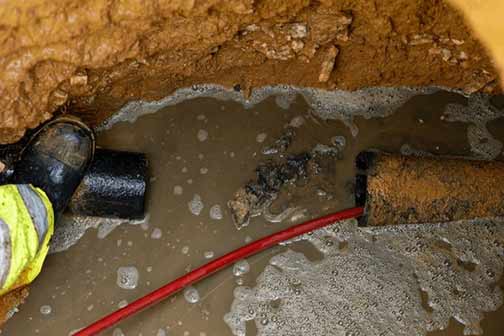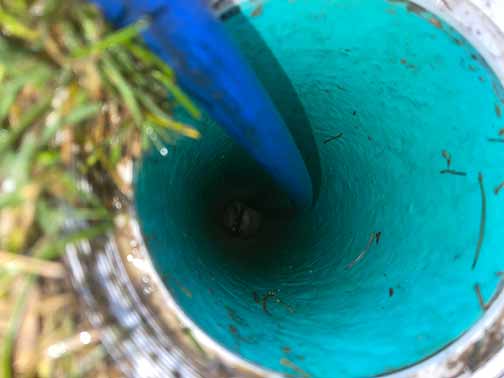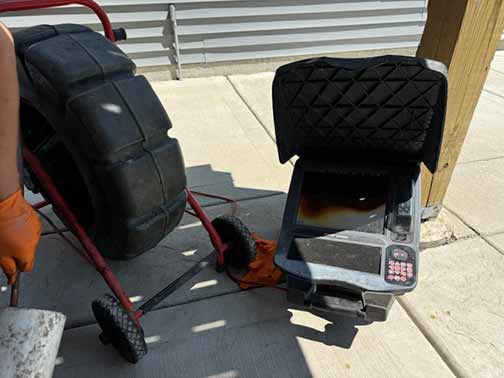
A properly functioning sewer line is essential for maintaining a clean and hygienic home environment. However, clogs can disrupt your plumbing system, causing inconvenience and potential health hazards. Below we will provide practical advice on identifying sewer line clogs and offer solutions to resolve them, ensuring your plumbing system runs smoothly.
Common Causes of Sewer Line Clogs
Several factors can contribute to sewer line clogs. Understanding these causes can help you prevent clogs and maintain your plumbing system. Here are some of the most common causes:
- Tree roots: Tree roots are one of the leading causes of sewer line clogs. As trees grow, their roots can infiltrate sewer lines in search of water and nutrients, causing blockages and damage.
- Debris and foreign objects: Items like grease, hair, food particles, and other debris can accumulate in the sewer line over time, leading to clogs. Flushing inappropriate items, such as sanitary products and wipes, can also cause blockages.
- Pipe damage: Cracked or collapsed pipes can obstruct the flow of wastewater, causing clogs. Aging pipes made of materials like clay or cast iron are particularly susceptible to damage.
- Misaligned or sagging pipes: Shifts in the ground or poor installation can cause pipes to become misaligned or sag, creating areas where waste can accumulate and cause blockages.
- Grease buildup: Pouring grease down the drain can lead to the accumulation of fatty deposits, which can obstruct the flow of wastewater and cause clogs.
Identifying Signs of a Sewer Line Clog
Recognizing the early signs of a sewer line clog can help you address the issue before it worsens. Here are some common indicators of a clogged sewer line:
- Slow-draining fixtures: If multiple fixtures in your home, such as sinks, showers, and toilets, are draining slowly, it could indicate a sewer line clog.
- Gurgling noises: Unusual gurgling sounds from your drains or toilets can be a sign of a sewer line clog. These noises occur when trapped air is released as wastewater struggles to flow through the clog.
- Water backups: If wastewater backs up into your sinks, toilets, or showers, it is a clear sign of a severe sewer line clog.
- Unpleasant odors: Foul smells emanating from your drains or yard can indicate a sewer line clog, as trapped waste begins to decompose.
- Soggy or lush patches in your yard: If you notice unusually green or wet areas in your yard, it could be a sign of a leaking or clogged sewer line.

DIY Methods to Fix Sewer Line Clogs
While some sewer line clogs require professional intervention, you can try a few DIY methods to resolve minor clogs. Here are some techniques you can use:
- Plunging: A plunger can help dislodge minor clogs in your sewer line. Use a plunger on the affected fixtures, creating a tight seal and pumping vigorously to clear the blockage.
- Using a drain snake: A drain snake, also known as a plumbing auger, can help break up and remove clogs. Insert the snake into the drain and twist it to catch and remove the blockage.
- Hot water and baking soda: Pour a mixture of hot water and baking soda down the drain to help dissolve grease and debris. This method can be effective for minor clogs caused by grease buildup.
- Chemical drain cleaners: While chemical drain cleaners can be effective, they should be used with caution, as they can damage your pipes and harm the environment. Always follow the manufacturer’s instructions and use them sparingly.
- Enzyme-based cleaners: Enzyme-based cleaners are a safer alternative to chemical drain cleaners. These cleaners use natural enzymes to break down organic matter, helping to clear clogs without damaging your pipes.
When to Call a Professional Plumber
While DIY methods can resolve minor clogs, some situations require professional intervention. Here are some instances when you should call a plumber:
- Persistent or severe clogs: If your efforts to clear the clog are unsuccessful, it’s time to call a professional plumber. Persistent or severe clogs may require specialized equipment and expertise to resolve.
- Multiple affected fixtures: If multiple fixtures in your home are experiencing issues, it could indicate a more significant problem with your sewer line that requires professional attention.
- Frequent clogs: If you consistently experience clogs, it may be a sign of an underlying issue that needs professional assessment and repair.
- Visible damage to pipes: If you notice visible damage to your pipes, such as cracks or leaks, it’s essential to call a plumber to assess and repair the issue before it worsens.
- Unpleasant odors and water backups: Persistent foul odors and frequent water backups are clear indicators of a serious clog that requires professional attention.
Preventing Sewer Line Clogs
Prevention is the key to maintaining a smooth-running plumbing system. Here are some tips to help you prevent sewer line clogs:
- Be mindful of what you flush: Avoid flushing items like sanitary products, wipes, and thick paper towels, which can cause clogs. Stick to flushing only toilet paper and human waste.
- Dispose of grease properly: Instead of pouring grease down the drain, collect it in a container and dispose of it in the trash. This will help prevent grease buildup in your pipes.
- Use drain screens: Install drain screens in your sinks and showers to catch hair, food particles, and other debris before they enter your sewer line.
- Regularly maintain your plumbing system: Schedule regular inspections and maintenance with a professional plumber to identify and address potential issues before they become severe.
- Address tree root issues: If you have trees near your sewer line, consider having a professional assess the situation and use root barriers or other methods to prevent root infiltration.
- Avoid chemical drain cleaners: Limit your use of chemical drain cleaners, as they can damage your pipes and lead to more significant issues. Opt for natural enzyme-based cleaners instead.
- Educate household members: Make sure everyone in your household understands what can and cannot be flushed or poured down the drain. This will help prevent clogs caused by improper disposal practices.

The Importance of Regular Sewer Camera Inspections
Regular sewer line inspections are crucial for maintaining a healthy plumbing system. These inspections can help identify potential issues before they become severe, saving you time and money on repairs. Here are some benefits of regular sewer line inspections:
- Early detection of problems: Regular sewer camera inspections can identify issues like tree root infiltration, pipe damage, and misalignment early, allowing you to address them before they cause significant problems.
- Prevention of clogs: Inspections can help prevent clogs by identifying and addressing potential blockages before they become severe.
- Prolonged pipe lifespan: Regular maintenance and inspections can help extend the lifespan of your pipes by addressing issues before they cause significant damage.
- Cost savings: Addressing problems early can save you money by preventing costly repairs and emergency plumbing services.
- Improved home health and safety: Maintaining a properly functioning sewer line helps ensure a clean and hygienic home environment, reducing the risk of health hazards caused by sewage backups and leaks.
Emerging Technologies in Sewer Line Maintenance
Advancements in technology have led to the development of innovative solutions for sewer line maintenance. These emerging technologies can help identify and address issues more efficiently and effectively. Here are some examples:
- Sewer Camera Inspections: Camera inspections allow plumbers to visually inspect the inside of your sewer line, identifying blockages, damage, and other issues without invasive digging.
- Hydro jetting: Hydro jetting uses high-pressure water to clear blockages and clean the inside of pipes. This method is highly effective at removing stubborn clogs and debris.
- Trenchless technology: Trenchless methods, such as pipe bursting and pipe lining, allow for the repair and replacement of sewer lines without extensive excavation. These techniques minimize disruption to your property and reduce repair time and costs.
- Smart sensors: Smart sensors can be installed in your sewer line to monitor flow and detect potential issues in real time. These sensors can alert you to problems before they become severe, allowing for proactive maintenance and repair.
In Summary
Sewer line clogs can be a significant inconvenience and pose potential health risks if not addressed promptly. By understanding the common causes of clogs, recognizing the signs of a blockage, and implementing preventative measures, you can maintain a smooth-running plumbing system.
While DIY methods can resolve minor clogs, it’s essential to know when to call a professional plumber for more severe issues. Regular inspections and the use of emerging technologies can help ensure the longevity and health of your sewer line, ultimately providing you with peace of mind and a well-functioning home environment.

